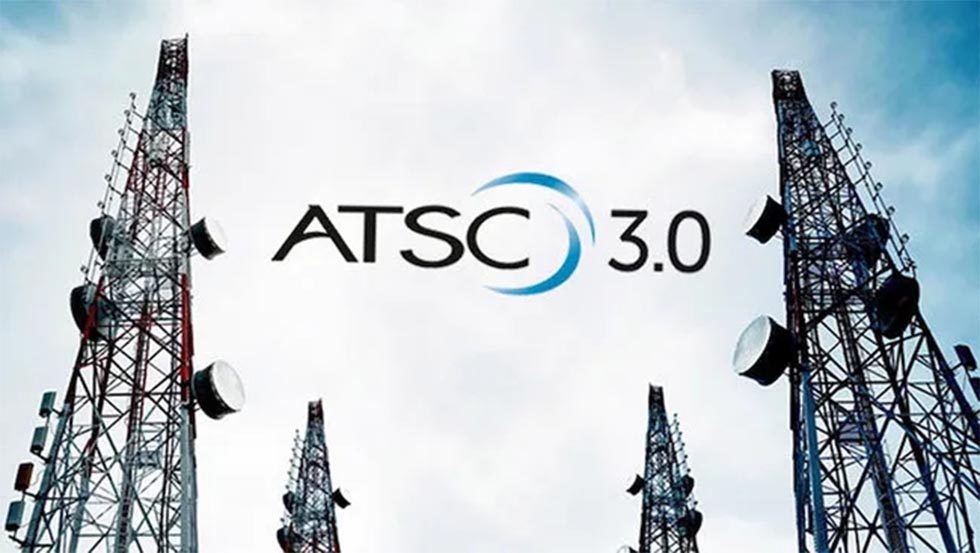Sinclair, IIT Bombay Ink MoU on Advancing ATSC 3.0-Based Broadcast-to-Everything
B2X improves upon direct-to-mobile and extends broadcast into the 6G ecosystem

MUMBAI, India, and BALTIMORE—Sinclair and the Indian Institute of Technology Bombay (IIT Bombay) have signed a memorandum of understanding on technology and standards development collaboration supporting wireless broadcast services via next-generation telecom and broadcast networks.
They will focus on researching ways to enhance ATSC 3.0 for various mobile, TV and other fixed applications in a way that benefits India and the world, Sinclair said.
The new 3.0 capabilities aim to advance Broadcast-to-Everything (B2X) use cases to provide dynamic traffic management and fast interworking with 5G networks, efficient spectrum use, low-latency datacasting, edge content distribution and improved battery life for smartphones, feature phones, wearables and Internet of Things (IoT) devices, it said.
“We are excited to partner with Sinclair in wireless telecom transformation and promote academic excellence, joint projects and joint intellectual property development, including Make in India initiatives to drive B2X adoption in India,” Shireesh Kedare, professor and director of IIT Bombay, said. “It touches IIT Bombay’s mission to address the needs of society and country at large and develop technologies and products that improve the quality of life for both urban and rural population.”
ATSC members currently are at work on B2X standardization, and IIT Bombay—a new member—will contribute directly to that work.
Broadcast-to-Everything is seen as a way of helping India relieve wireless-network congestion. The nation has more than 1 billion mobile subscribers, almost 250 million TV households and high per capita mobile data consumption. At the same time, it is witnessing a proliferation of live news, sports and popular linear-TV and radio channels. B2X addresses network congestion, providing a high quality of service for concurrent and popular content and a means to promote sustainability, Sinclair said.
B2X improves upon direct-to-mobile (D2M) and extends broadcast into the IMT-2030 (6G) ecosystem, it said.
Get the TV Tech Newsletter
The professional video industry's #1 source for news, trends and product and tech information. Sign up below.
“ATSC 3.0’s high bandwidth efficiency and time and frequency interleaving features make it undisputedly the best mobile broadcast standard,” Mark Aitken, senior vice president at Sinclair, said. “ATSC 3.0 also stands alone with its bootstrap ‘blanking’ feature that facilitates the introduction of B2X release enhancements without disrupting the operation of earlier releases.”
Longer-term, B2X can advance emergency and disaster management, remote education and skill development, advanced agricultural methods, service resilience, augmentation of satellite positioning and timing, vehicular communications and OpenAI-based applications for broadcasting and datacasting, Sinclair said.
“We consider the collaboration work with IIT Bombay to be of the utmost importance in establishing ATSC 3.0-based B2X as the preferred technology for broadcasting and multicasting for diverse applications, not just in India, but ultimately across the globe. Sinclair is proud to have IIT Bombay reinforce our foundational role in advancing next generation broadcast,” said Sinclair president and CEO Chris Ripley said.
ATSC president Madeliene Noland lauded news of the MoU, noting ITT Bombay is joining “other world-class academic and research institutions as ATSC’s newest member.”
Shashi Shekhar Vempati, former CEO of Prasar Bharati, IIT Bombay alumnus and member of the ATSC Business Advisory Council, noted the recent success of ATSC 3.0 in Brazil and the opportunity B2X offers to advance broadcasting’s role in serving the public.
“The recent decision by Brazil to adopt the ATSC 3.0 standard for broadcast services, based on extensive testing of multiple systems, paves the way for B2X to further advance the standard’s broadcast resilience for the greater public good,” he said. “This collaboration furthers the developmental goals of a Viksit Bharat (Developed Bharat) as envisioned by Prime Minister Narendra Modi.”
More information is available on the Sinclair and ITT Bombay websites.
Phil Kurz is a contributing editor to TV Tech. He has written about TV and video technology for more than 30 years and served as editor of three leading industry magazines. He earned a Bachelor of Journalism and a Master’s Degree in Journalism from the University of Missouri-Columbia School of Journalism.

